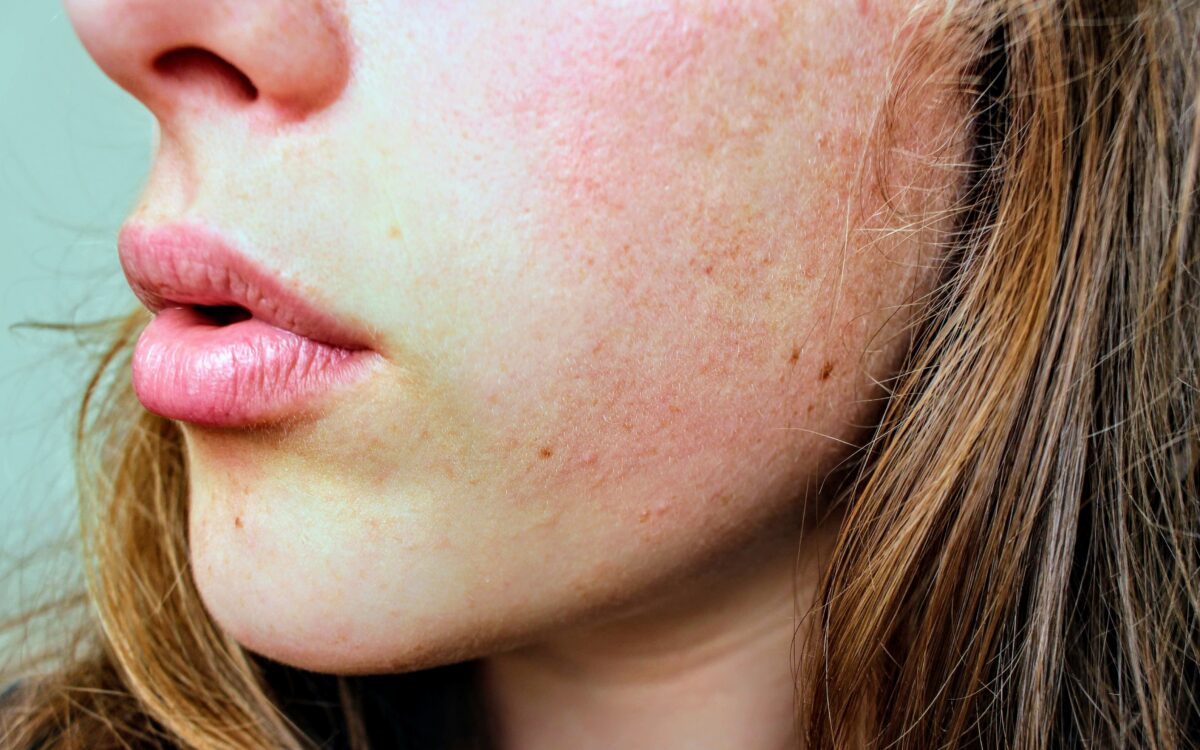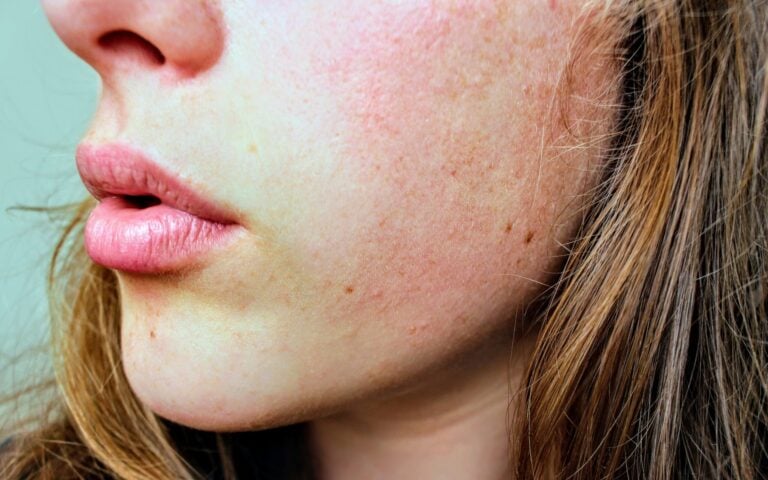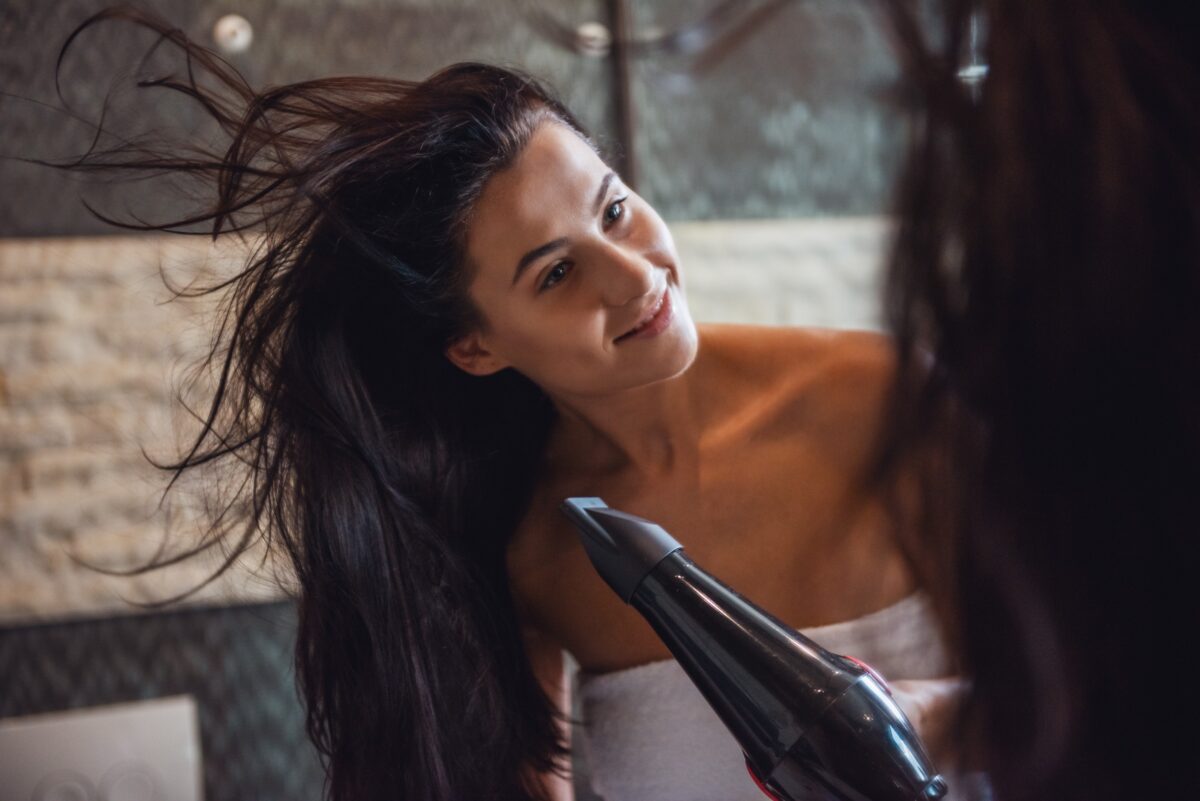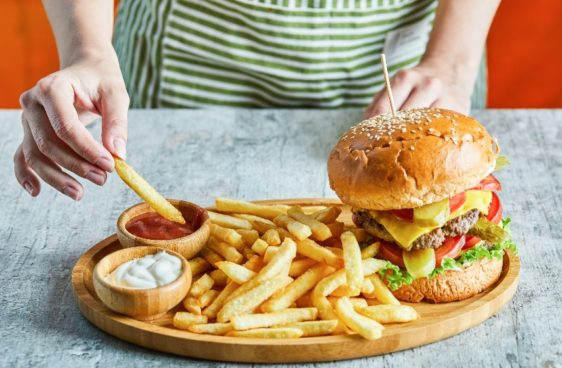Disclaimer: This article is for informational purposes only and is not intended to diagnose any conditions. LifeDNA does not provide diagnostic services for any conditions mentioned in this or any other article.
Hair texture varies widely among individuals, and much of this diversity can be traced back to human genetics. Read on to explore the different types of hair texture, and the science behind what makes hair straight, wavy, or curly, and uncover the genetic factors that play a pivotal role in determining the locks you see in the mirror every day.
What is Hair Texture?
Hair texture refers to the physical characteristics of hair strands, including their shape, curl pattern, and thickness. Scientifically, hair texture is primarily determined by the shape of the hair follicle and the distribution of a protein called keratin. Hair follicles can be round, oval, or asymmetrical, and this shape influences whether hair grows straight, wavy, or curly.
Straight hair typically comes from round follicles, which produce strands that grow smoothly and evenly. Wavy hair is associated with slightly oval follicles that cause the hair to bend and form gentle waves. Curly and coiled hair results from more irregularly shaped follicles, leading to tighter curls or spirals.
Genetics plays a crucial role in determining hair texture. The texture of a person’s hair is not just a matter of chance but a reflection of their unique genetic makeup. Understanding these genetic influences can help individuals better appreciate the natural qualities of their hair and how it integrates into their overall lifestyle and appearance.
How Do You Test for Hair Texture?
Testing for hair texture involves several methods, each providing insights into the physical characteristics of the hair. These methods are useful for understanding the genetic factors influencing hair texture which can impact daily habits and lifestyle choices.
- Visual and Manual Assessment: The most straightforward method involves visually examining the hair’s appearance and manually assessing its texture. This includes checking whether the hair is straight, wavy, curly, or coiled. By gently stretching a hair strand, one can also determine its elasticity—curly hair tends to be more elastic compared to straight hair. This basic method provides a quick, although less precise, evaluation of hair texture.
- Microscopic Analysis: Scientists use microscopes to analyze hair follicles for a more detailed examination. This method involves taking samples of hair and examining them under high magnification to observe the shape of the follicle and the cross-sectional profile of the hair shaft. This can reveal whether the hair follicle is round, oval, or asymmetrical, which correlates with different hair textures.
- Chemical Testing: This method involves applying specific chemicals to the hair to measure its response, such as the ability to hold a curl or straighten out. The results can provide information about the density and distribution of disulfide bonds in the hair, which affect its texture.
These methods offer various insights into hair texture, helping individuals understand the genetic and structural factors that influence their hair type.
Is Hair Texture Genetic?
Hair texture is largely determined by genetics. Scientific studies have shown that the shape and structure of hair follicles, which dictate whether hair is straight, wavy, curly, or coily, are influenced by specific genetic factors.
Several key genes are involved in influencing hair texture. The EDAR gene affects hair thickness and has variants associated with the straighter, thicker hair commonly found in East Asian populations. Additionally, the TCHH gene encodes for a protein critical to the inner root sheath of hair follicles, playing a role in hair curliness.
Understanding the genetic basis of hair texture can help individuals appreciate the unique characteristics of their hair and make informed decisions about their hair care routines. By recognizing that hair texture is rooted in one’s genetic makeup, people can better tailor their hair care practices to enhance and maintain the health and beauty of their natural hair.
Other Factors Influencing Hair Texture
A combination of genetic, physiological, and environmental factors influences hair texture. Understanding these influences can provide insight into why hair appears and behaves differently from one person to another.
Keratin Proteins
Hair texture is affected by keratin, a protein that makes up the majority of the hair structure. The distribution and composition of keratin proteins determine the hair’s strength and elasticity. Variations in keratin production can lead to differences in hair texture, with higher levels of keratin often resulting in straighter hair and different structural configurations contributing to curliness.
Disulfide Bonds
The presence and density of disulfide bonds — chemical bonds that link keratin proteins — are crucial in determining hair texture. Curly hair typically has a higher density of these bonds, which causes the hair to curl and bend. In contrast, straight hair has fewer disulfide bonds, resulting in a smoother, straighter appearance. The chemical balance of these bonds can be influenced by various factors, including hair care products and treatments.
Hormones
Hormonal changes can also impact hair texture. For instance, hormone fluctuations during puberty, pregnancy, or menopause can alter the hair’s growth pattern and texture. Hormones like androgens can affect the size of hair follicles and the rate of hair growth, potentially changing hair texture temporarily or permanently.
Age
As people age, their hair texture can change due to shifts in hormonal levels and changes in the hair follicle’s size and shape. Typically, hair may become finer and less elastic with age, leading to alterations in its texture.
Health and Nutrition
Overall health and nutritional status play a role in hair texture. Deficiencies in vitamins and minerals, such as iron, biotin, and zinc, can lead to changes in hair texture and health. Adequate nutrition supports the maintenance of healthy hair, whereas a poor diet can result in brittle or uneven texture.
Environmental Factors
External factors, including exposure to heat, humidity, and chemical treatments, can influence hair texture. Frequent use of heat styling tools or chemical treatments can alter the hair’s natural texture, making it more prone to damage and changing its appearance over time.
Hair Care Products
The use of certain hair care products can affect texture. Products with high alcohol content can dry out the hair, leading to a rougher texture. Conversely, moisturizing conditioners and serums can enhance softness and manageability.
By considering these factors, individuals can better understand how their hair texture is shaped and how various aspects of their lifestyle and environment contribute to their hair’s unique characteristics.
What is the Healthiest Hair Texture?
There is no universally “healthiest” hair texture, as hair health is more about its condition than its texture. However, healthy hair is characterized by certain key attributes regardless of whether it is straight, wavy, or curly.
Healthy hair typically exhibits smoothness, strength, and elasticity. This means that the hair cuticle, the outer protective layer, should be intact and lie flat, allowing light to reflect off the surface and give the hair a natural shine. Healthy hair is also resilient, showing minimal breakage or split ends, and has good elasticity, meaning it can stretch without breaking.
Adequate intake of essential nutrients such as vitamins A, C, D, and E, biotin, and minerals such as zinc and iron supports optimal hair health. Regular conditioning and avoiding excessive heat or chemical treatments help maintain the hair’s moisture balance and structural integrity.
While hair texture is largely genetic, well-nourished and properly cared-for hair of any texture can be considered healthy. Maintaining a healthy scalp and using appropriate hair care products tailored to one’s specific hair type and needs is crucial for overall hair health.
Can Hair Texture Change Over Time?
Hair texture can change over time due to various factors, even though the underlying genetic predisposition remains the same.
- Hormonal changes are a significant influence. During puberty, pregnancy, or menopause, fluctuations in hormone levels can alter the size and shape of hair follicles, which can lead to changes in hair texture. For instance, some people may notice their hair becoming curlier or straighter during these periods.
- Aging also impacts hair texture. As individuals age, the production of certain proteins, including keratin, decreases, and hair follicles may become smaller and less active. This can result in finer, more brittle, and less elastic hair.
- Health and lifestyle factors play a role as well. Nutritional deficiencies, stress, and exposure to environmental factors like heat and chemicals can affect hair texture. For example, poor diet or excessive heat styling can lead to drier, more brittle hair.
- Medical treatments and conditions can also contribute to changes in hair texture. Certain medications and treatments, such as chemotherapy, can alter hair’s growth pattern and texture temporarily or permanently.
Overall, while genetics set the baseline for hair texture, various factors can influence how it evolves over a person’s lifetime.
Types of Hair Textures
Understanding the different types of hair textures can help individuals better manage and care for their hair. There are generally four main types of hair textures, each with distinct features:
- Straight Hair (Type 1): Straight hair has a round follicle shape, which allows the hair to grow smoothly and evenly. It tends to lie flat against the scalp and has a sleek appearance. Straight hair is less prone to tangling and frizz compared to other types. However, it can sometimes appear oily more quickly because the natural oils from the scalp travel down the hair shaft more easily.
- Wavy Hair (Type 2): Wavy hair is characterized by a gentle S-shaped pattern. This texture results from a slightly oval or asymmetrical follicle shape that creates natural waves. Wavy hair often has more volume than straight hair and can be prone to frizz, especially in humid conditions. The wave pattern can range from loose, beachy waves to more defined, bouncy waves, depending on the individual’s specific hair structure.
- Curly Hair (Type 3): Curly hair forms tight curls or ringlets and is produced by a more oval or asymmetrical follicle shape. The natural curl pattern can vary from soft curls to tight coils. Curly hair is typically more prone to dryness and frizz due to the twists and turns in the hair shaft, which can make it harder for natural oils to travel down the hair. Proper moisturizing and regular conditioning are essential for maintaining the health and definition of curly hair.
- Coily Hair (Type 4): Coily hair, also known as afro-textured hair, features very tight curls or zigzag patterns. This type of hair has the most pronounced curl pattern and can range from soft, fluffy coils to more compact, tight curls. Coily hair is often the most delicate and prone to breakage due to its tightly coiled nature. It requires intensive moisture and care to maintain its elasticity and prevent dryness.
Each hair type comes with its own unique set of characteristics and care needs. Understanding these types can help individuals tailor their hair care routines to maintain health and manageability. By recognizing their hair type, individuals can make informed choices about products and routines that best suit their specific needs, contributing to healthier, more manageable hair.
How to Care for Different Hair Textures
Caring for different hair textures requires understanding the unique characteristics and needs of each type. Whether your hair is straight, wavy, curly, or coily, the right care routine can enhance its natural beauty and health. Here’s a guide to caring for each hair texture based on scientific facts and data.
Straight Hair (Type 1)
Straight hair has a round follicle shape, which allows natural oils to travel easily from the scalp down the hair shaft. This can make straight hair more prone to becoming oily quickly.
- Shampoo Regularly: Use a gentle, sulfate-free shampoo to remove excess oil and prevent buildup. Washing every 2 to 3 days can help keep the hair clean without stripping it of essential oils.
- Lightweight Conditioner: Apply a lightweight conditioner to the ends to prevent tangling without weighing the hair down. Avoid the scalp area to prevent excess oiliness.
- Heat Protection: Use a heat protectant spray before using styling tools like flat irons or blow dryers to prevent heat damage.
Wavy Hair (Type 2)
Wavy hair has an S-shaped pattern and tends to be more prone to frizz. It has a slightly oval follicle shape, which creates natural waves.
- Moisturizing Shampoo and Conditioner: Choose products that provide hydration to enhance waves and reduce frizz. Look for ingredients like glycerin and natural oils.
- Avoid Over-Washing: Washing wavy hair 2 to 3 times a week helps maintain natural oils and moisture balance.
- Styling Products: Use lightweight mousses or gels to define waves without stiffening hair. Scrunch the product into damp hair and let it air dry or use a diffuser.
Curly Hair (Type 3)
Curly hair forms tight curls or ringlets due to its oval or asymmetrical follicle shape. It is more prone to dryness because the natural oils struggle to travel down the hair shaft.
- Hydrating Shampoo and Conditioner: Use sulfate-free, hydrating products to prevent dryness and maintain curl definition. Ingredients like shea butter and coconut oil are beneficial.
- Deep Conditioning: Regular deep conditioning treatments, at least once a week, help to nourish and moisturize curls.
- Gentle Detangling: Use a wide-tooth comb or fingers to detangle curly hair wet and conditioned to prevent breakage.
Coily Hair (Type 4)
Coily hair, or afro-textured hair, has very tight curls or zigzag patterns. This hair type has the most pronounced curl pattern and is highly prone to dryness and breakage.
- Moisturizing and Nourishing Products: Use rich, creamy shampoos and conditioners to maintain moisture. Look for products with natural oils, butters, and proteins.
- Leave-In Conditioners: Apply leave-in conditioners or hair creams to keep the hair hydrated and manageable.
- Protective Styling: Incorporate protective styles like braids, twists, or buns to minimize manipulation and reduce breakage. Cover hair with a satin or silk scarf at night to reduce friction and moisture loss.
General Tips for All Hair Types
- Avoid Heat Damage: Minimize the use of heat styling tools and always use a heat protectant.
- Regular Trims: Trim hair regularly to prevent split ends and maintain healthy growth.
- Balanced Diet: Maintain a diet rich in vitamins and minerals, such as biotin, vitamin E, and omega-3 fatty acids, to support healthy hair from the inside out.
By tailoring hair care routines to suit their specific texture, individuals can achieve healthier, more manageable hair. Understanding the unique needs of each hair type, influenced by genetic factors, allows for better care and maintenance, enhancing the natural beauty of their hair.
Why Choose LifeDNA
With over 200 DNA-based trait reports available across our Wellness, Vitamins and Supplements, Fitness, Nutrition, Sleep, Personality and Cognition, and Skincare Reports, LifeDNA provides a holistic approach to your wellness and beauty journey. Explore also our premium Aging Report, Methylation Genes Report, and Detoxification Genes Report for even deeper insights.
Start your journey to the even more beautiful you today. Avail yourself of LifeDNA’s plans and gain access to invaluable genetic insights that will guide your skincare choices and overall wellness. Discover the power of personalized care and make informed decisions for a more vibrant, confident you. Dive into LifeDNA’s reports and transform your skincare routine based on the science of your unique genetics.
References
- https://www.medicinenet.com/what_are_the_four_types_of_hair/article.htm
- https://my.clevelandclinic.org/health/body/23204-keratin
- https://www.ncbi.nlm.nih.gov/pmc/articles/PMC9836136/#:~:text=Stereomicroscope%20is%20usually%20used%20to,%2C%20shaft%20profile%2C%20and%20cuticle.
- https://www.sciencedirect.com/topics/biochemistry-genetics-and-molecular-biology/disulfide-bond#:~:text=Disulfide%20bonds%20are%20covalent%20interactions,covalent%20link%20between%20polypeptide%20strands.
- https://www.ncbi.nlm.nih.gov/pmc/articles/PMC7432488/
- https://academic.oup.com/hmg/article/17/6/835/601141
- https://medlineplus.gov/genetics/gene/edar/
- https://www.ncbi.nlm.nih.gov/pmc/articles/PMC6894537/
- https://www.livingproof.com/hair-101/how-to-tell-if-your-hair-is-healthy.html
- https://www.ouidad.com/blogs/curl-talk/hair-textures-101-changes-in-hair-texture#:~:text=Changes%20in%20hair%20texture%20happen,texture%20may%20change%20over%20time.
- https://www.breastcancer.org/treatment-side-effects/menopause/hair-changes
- https://www.nm.org/healthbeat/healthy-tips/Quick-Dose-Why-Does-Your-Hair-Grow-Back-Differently-After-Chemotherapy#:~:text=New%20Color%2C%20Texture%20or%20Curls&text=Many%20people%20report%20having%20%22chemo,hair%20follicles%20to%20behave%20differently.
- https://www.medicinenet.com/what_are_the_four_types_of_hair/article.htm
- https://www.medicalnewstoday.com/articles/hair-types
Aira
on
August 16, 2024



























